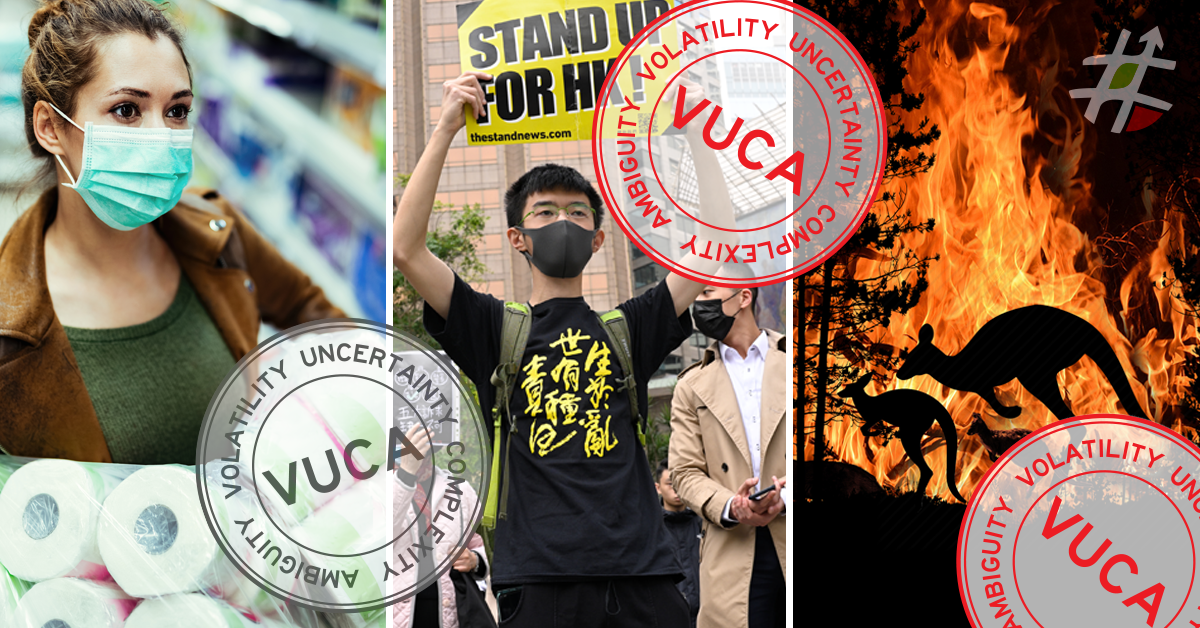We live in turbulent times. In the first seven months of 2020, we’ve had bush fires, mass unrest leading to protests in Hong Kong and the US, rising tensions with China that have seen government manufacturing incentives move elsewhere, and, most disruptive, the COVID-19 pandemic.
And there’s still five months left for 2020 to throw us more curve balls.
We also have no reason to believe that next year will be a time of greater stability. Indeed, the coronavirus pandemic has irrevocably altered the business landscape. It has never been more important to locate key failure points in supply chains. But how do we do it?
Understanding the underlying factors
These are common underlying factors that lead to supply chain failure, as identified by Airmic and reported by CIPS:
- Offshoring, which not only makes it difficult for organisations to monitor their supply chains, but leads to issues with transparency.
- Further to the first point, increasingly complex and global supply chains mean companies do not have adequate awareness of who there are suppliers are subcontracting to and therefore have a poor overall view.
- Cost pressures and the relentless need to save leads to compromise on quality and ethics, which in turn creates long term problems.
- Social media and increasing consumer awareness of social and environmental issues can mean that sacrifices on quality and ethics lead to further long term reputational damage.
- In the pursuit of savings, just-in-time production methods were used as great way of reducing warehousing costs, but this method makes it difficult to recover from supply chain failures as there are no stockpiles to fall back on.
- Geographic clustering can make manufacturers vulnerable to a localised disaster and geopolitical issues. For example, China’s status as the world’s factory is under threat due to the pandemic and the trade war with the US, among other things.
- Finally, modern supply chains are complex and often depend on multiple suppliers, which increases overall vulnerability.
However, we’re not suddenly going to bring all manufacturing back on-shore or start stockpiling goods just in case world shipping grinds to a halt. Instead, what we should do is take a structured approach to supply chain risk management, while fostering a culture of risk management.
Supply chain risk: the knowns and unknowns
McKinsey has a great article discussing at length how to go about taking a structured approach to supply-chain risk management. They suggest thinking of risks in terms of known risks and unknown risks.
Known risks can be identified, measured and managed over time. For example, if a region is prone to bushfires, that is a risk we can account for when dealing with a supplier from that region.
Unknown risks are those that are impossible or very difficult to foresee. The scale and impact of the COVID-19 pandemic was an unknown risk.
Managing known risks in your supply chain
Managing known risks involves extensive planning. The planning starts with mapping out the whole supply chain, which demands a level of transparency that some vendors might not be willing to provide. If your vendors are not willing to be open with you, that in itself is a sure sign of risk.
The next step involves building a risk-management framework that takes into account the impact on the organisation if the risk materialises. The framework needs to account for the likelihood of the risk occurring, and contain details about the organisation’s preparedness to deal with the risk. Finally, with known risks, the next step is to monitor and act swiftly should the risk materialise.
Dealing with unknown risks in your supply chain
With unknown risks, you have to build a strong defence through your company culture. In fact, a strong culture of risk awareness, reinforced through training, is also necessary to protect against knowns risks. Our world is not static. All risk-management frameworks have to be updated while the internal and external environments are continually scanned for new and emerging risks. Unknown risks can become known through proper monitoring. If we know the risk, we can tackle it with a plan. So the best way to defend against unknown risks and to stay vigilant for known risks is to build a risk-aware culture.
We have five months to prepare for the unknown of 2021
There are five months to go in 2020. Many of us can’t wait for it to be over and start afresh next year, but the reality is that no one knows what 2021 will throw at us. Regardless of the uncertainty, or indeed because of it, risk-management must be at the top of our to-do list.
So let’s start mapping our supply chains and locating the key failure points before another year is wasted.








